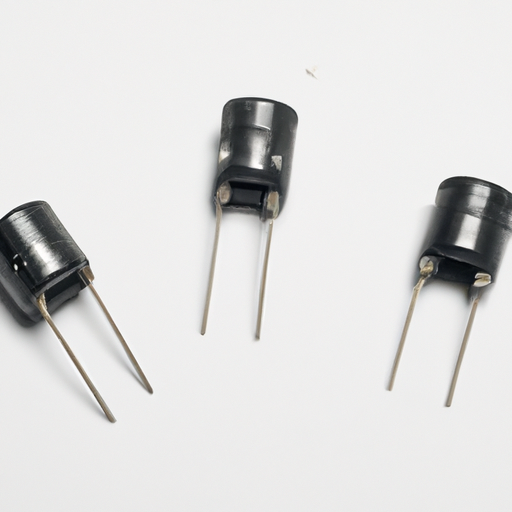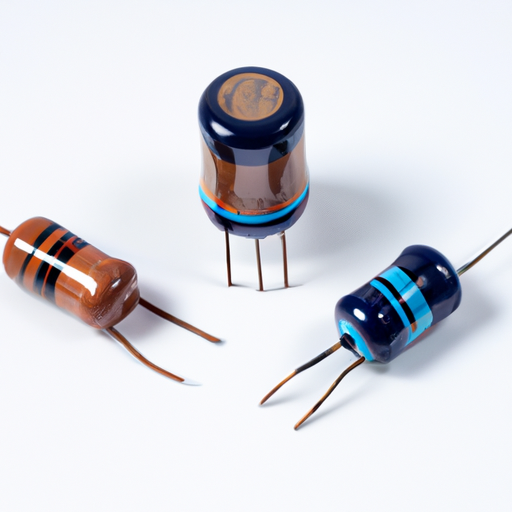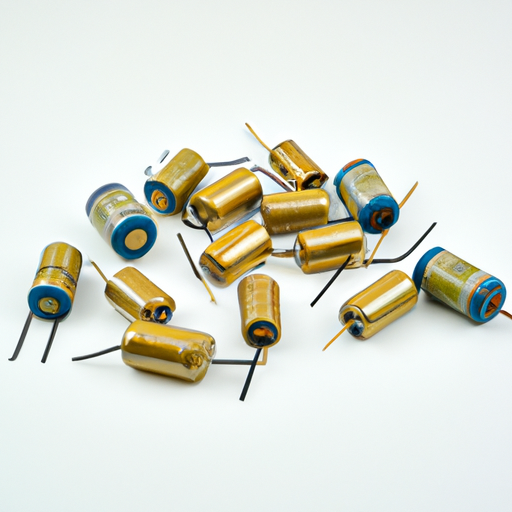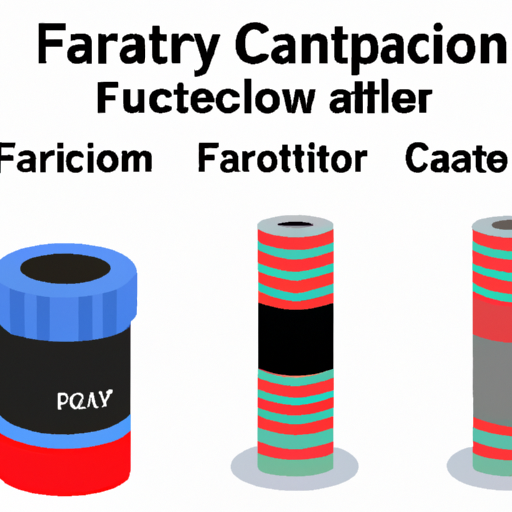How to choose spot capacitors?
How to Choose Spot Capacitors
I. Introduction
A. Definition of Spot Capacitors
Spot capacitors are specific capacitors selected for particular applications within electronic circuits. They play a crucial role in managing electrical energy, filtering signals, and stabilizing voltage levels. The term "spot" refers to the targeted selection of capacitors based on the unique requirements of a circuit or device.
B. Importance of Choosing the Right Capacitor
Choosing the right capacitor is vital for the performance, reliability, and longevity of electronic devices. An inappropriate capacitor can lead to circuit failure, reduced efficiency, and even damage to other components. Therefore, understanding how to select the right spot capacitor is essential for engineers, hobbyists, and anyone involved in electronics.
C. Overview of the Article
This article will guide you through the process of selecting spot capacitors, covering the fundamental principles of capacitors, their applications, key factors to consider, types of capacitors, sourcing options, and testing methods. By the end, you will have a comprehensive understanding of how to choose the right capacitor for your needs.
II. Understanding Capacitors
A. Basic Principles of Capacitors
1. Functionality
Capacitors store and release electrical energy in a circuit. They consist of two conductive plates separated by an insulating material (dielectric). When voltage is applied, an electric field forms between the plates, allowing the capacitor to store energy. This stored energy can be released when needed, making capacitors essential for various applications.
2. Types of Capacitors
There are several types of capacitors, each with unique characteristics and applications. The most common types include ceramic, electrolytic, tantalum, and film capacitors. Understanding these types is crucial for selecting the right capacitor for your specific needs.
B. Key Parameters of Capacitors
1. Capacitance
Capacitance, measured in farads (F), indicates a capacitor's ability to store electrical charge. The required capacitance value depends on the application, with larger values suitable for power supply filtering and smaller values for signal coupling.
2. Voltage Rating
The voltage rating indicates the maximum voltage a capacitor can handle without breaking down. It is essential to choose a capacitor with a voltage rating higher than the maximum voltage it will encounter in the circuit.
3. Equivalent Series Resistance (ESR)
ESR is a measure of a capacitor's internal resistance, affecting its efficiency and performance. Lower ESR values are preferable for high-frequency applications, as they reduce energy loss.
4. Temperature Coefficient
The temperature coefficient indicates how a capacitor's capacitance changes with temperature. Different applications may require capacitors with specific temperature coefficients to ensure stable performance across varying temperatures.
5. Lifetime and Reliability
The expected lifetime and reliability of a capacitor are critical factors, especially in applications where failure can lead to significant consequences. Manufacturers often provide reliability ratings based on testing and historical data.
III. Applications of Spot Capacitors
A. Common Uses in Electronics
1. Power Supply Filtering
Capacitors are widely used in power supply circuits to filter out noise and stabilize voltage levels. They smooth out fluctuations in voltage, ensuring a steady supply of power to sensitive components.
2. Signal Coupling and Decoupling
In signal processing, capacitors are used for coupling and decoupling signals. They allow AC signals to pass while blocking DC components, ensuring that only the desired signals reach the next stage of the circuit.
3. Timing Circuits
Capacitors are essential in timing circuits, where they work in conjunction with resistors to create time delays. This application is common in oscillators and timers.
B. Specific Industry Applications
1. Automotive
In automotive applications, capacitors are used for power management, signal processing, and noise filtering. They play a crucial role in ensuring the reliability of electronic systems in vehicles.
2. Consumer Electronics
Capacitors are found in various consumer electronics, including smartphones, televisions, and audio equipment. They help improve performance and enhance the user experience.
3. Industrial Equipment
In industrial settings, capacitors are used in motor drives, power supplies, and control systems. Their reliability and performance are critical for the smooth operation of machinery.
IV. Factors to Consider When Choosing Spot Capacitors
A. Electrical Specifications
1. Capacitance Value
Determine the required capacitance value based on the specific application. Consult circuit design guidelines and perform calculations to ensure the selected capacitor meets the needs of the circuit.
2. Voltage Rating
Select a capacitor with a voltage rating that exceeds the maximum voltage in the circuit. This precaution helps prevent breakdown and ensures safe operation.
3. ESR and Impedance
Consider the ESR and impedance of the capacitor, especially for high-frequency applications. Lower ESR values are preferable for minimizing energy loss and improving efficiency.
B. Environmental Conditions
1. Operating Temperature Range
Evaluate the operating temperature range of the application. Choose capacitors rated for the expected temperature conditions to ensure reliable performance.
2. Humidity and Moisture Resistance
In environments with high humidity or moisture, select capacitors with appropriate ratings for moisture resistance to prevent degradation and failure.
C. Physical Size and Form Factor
1. PCB Space Constraints
Consider the available space on the printed circuit board (PCB). The physical size and form factor of the capacitor must fit within the design constraints.
2. Mounting Type (Through-hole vs. Surface Mount)
Decide on the mounting type based on the PCB design. Through-hole capacitors are easier to handle, while surface mount capacitors are more compact and suitable for high-density designs.
D. Reliability and Lifespan
1. Failure Rates
Research the failure rates of different capacitor types and brands. Opt for capacitors with a proven track record of reliability in similar applications.
2. Manufacturer Reputation
Choose capacitors from reputable manufacturers known for quality and reliability. This choice can significantly impact the overall performance and lifespan of the circuit.
V. Types of Spot Capacitors
A. Ceramic Capacitors
1. Characteristics and Applications
Ceramic capacitors are non-polarized and widely used for decoupling and filtering applications. They offer high capacitance values in small sizes and are suitable for high-frequency circuits.
2. Advantages and Disadvantages
Advantages include low cost, small size, and stability. Disadvantages may include voltage coefficient effects and limited capacitance values for certain applications.
B. Electrolytic Capacitors
1. Characteristics and Applications
Electrolytic capacitors are polarized and provide high capacitance values, making them ideal for power supply filtering and energy storage applications.
2. Advantages and Disadvantages
Advantages include high capacitance and low cost. Disadvantages include limited lifespan and sensitivity to voltage and temperature variations.
C. Tantalum Capacitors
1. Characteristics and Applications
Tantalum capacitors are known for their stability and reliability. They are used in applications requiring high capacitance in a small package, such as portable electronics.
2. Advantages and Disadvantages
Advantages include high capacitance and low ESR. Disadvantages include higher cost and sensitivity to voltage spikes.
D. Film Capacitors
1. Characteristics and Applications
Film capacitors are non-polarized and offer excellent stability and low ESR. They are commonly used in audio applications and timing circuits.
2. Advantages and Disadvantages
Advantages include high reliability and low distortion. Disadvantages may include larger size and higher cost compared to other types.
VI. Sourcing and Selecting Capacitors
A. Finding Reliable Suppliers
1. Online Distributors
Many online distributors offer a wide range of capacitors. Websites like Digi-Key, Mouser, and Newark provide detailed specifications and user reviews to help in the selection process.
2. Local Electronics Stores
Local electronics stores can be a valuable resource for sourcing capacitors. They often carry popular types and can provide immediate assistance.
B. Evaluating Product Specifications
1. Datasheets and Technical Documents
Always consult datasheets and technical documents for detailed specifications. These documents provide essential information about performance, ratings, and applications.
2. Comparison of Different Brands
Compare products from different brands to find the best fit for your needs. Look for reviews and feedback from other users to gauge reliability and performance.
C. Cost Considerations
1. Budgeting for Capacitors
Establish a budget for your capacitor selection. While cost is important, prioritize quality and reliability to avoid future issues.
2. Balancing Cost and Quality
Strive to find a balance between cost and quality. Sometimes, investing a little more in a reliable capacitor can save money in the long run by reducing failure rates.
VII. Testing and Validation
A. Importance of Testing Capacitors
Testing capacitors is crucial to ensure they meet the required specifications and perform reliably in the intended application. Regular testing can help identify potential issues before they lead to failure.
B. Common Testing Methods
1. Capacitance Measurement
Use capacitance meters to measure the actual capacitance of the capacitor. This measurement should match the specified value within acceptable tolerances.
2. ESR Testing
ESR meters can be used to measure the equivalent series resistance of capacitors. Low ESR values are essential for high-frequency applications.
3. Voltage and Temperature Testing
Test capacitors under various voltage and temperature conditions to ensure they perform reliably across the expected operating range.
C. Quality Assurance Practices
Implement quality assurance practices to ensure that the capacitors used in your designs meet the required standards. This may include regular testing, supplier audits, and adherence to industry standards.
VIII. Conclusion
A. Recap of Key Points
Choosing the right spot capacitor involves understanding the basic principles of capacitors, their applications, and the key factors to consider during selection. Different types of capacitors offer unique advantages and disadvantages, and sourcing from reliable suppliers is essential.
B. Final Thoughts on Choosing Spot Capacitors
The selection of spot capacitors is a critical aspect of electronic design. By considering electrical specifications, environmental conditions, physical size, and reliability, you can make informed decisions that enhance the performance and longevity of your circuits.
C. Encouragement for Further Research and Learning
As technology continues to evolve, staying informed about the latest developments in capacitor technology and applications is essential. Explore additional resources, attend workshops, and engage with the electronics community to deepen your understanding.
IX. References
A. Suggested Reading Materials
- "Capacitors: Technology and Applications" by John Smith
- "The Art of Electronics" by Paul Horowitz and Winfield Hill
B. Online Resources and Tools for Capacitor Selection
- Digi-Key Electronics: [www.digikey.com](http://www.digikey.com)
- Mouser Electronics: [www.mouser.com](http://www.mouser.com)
- Capacitor Selection Guide: [www.electronics-tutorials.ws](http://www.electronics-tutorials.ws)
By following this guide, you will be well-equipped to choose the right spot capacitors for your electronic projects, ensuring optimal performance and reliability.






